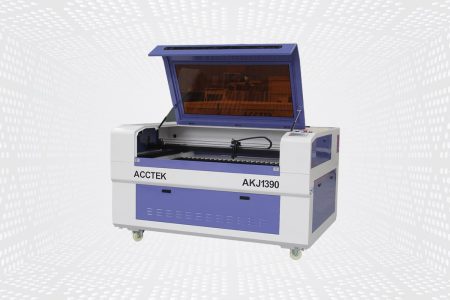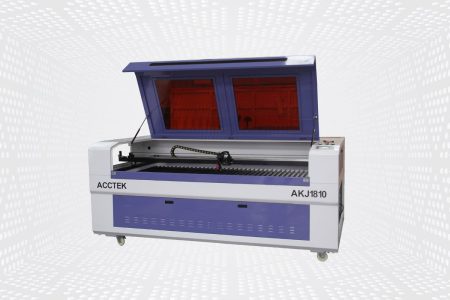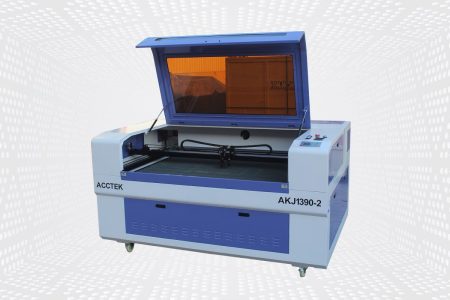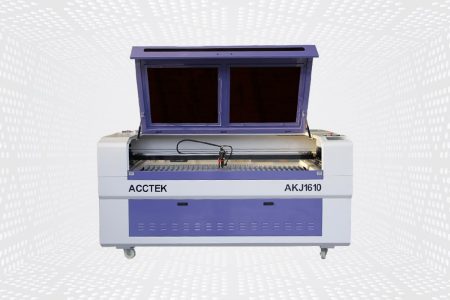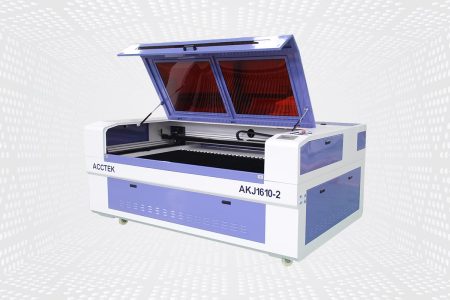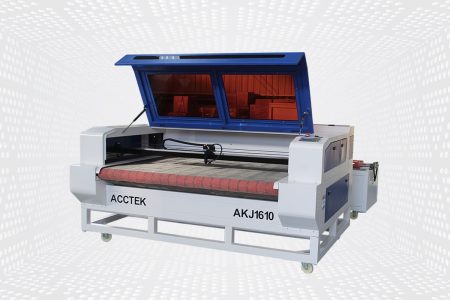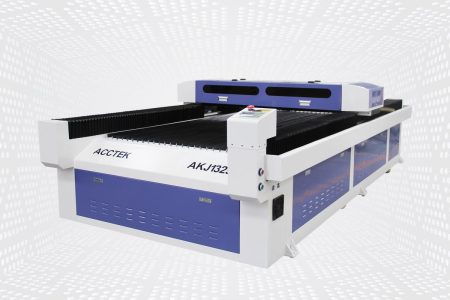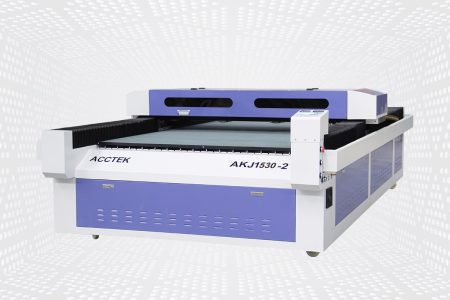Polypropylene Laser Cutting Machine
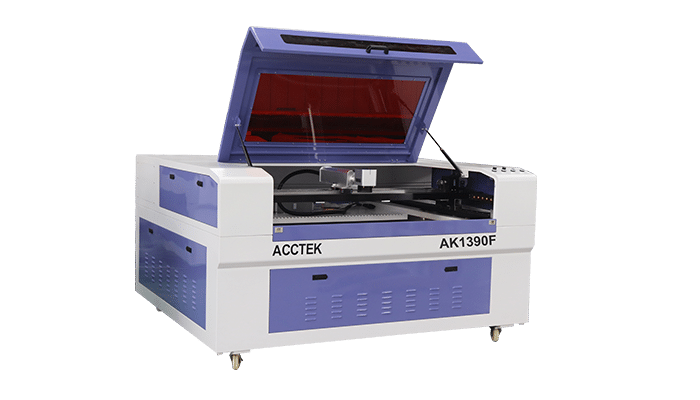

Photoelectric Technology
AccTek Laser focus on designing and manufacturing photoelectric-related system. We provide accurate and exquisite processing quality with leading R&D capability.

Integration Ability & Experienced
With an experienced, completed, and elite R&D team, customized such as automated, integrated with the robot, system integration, etc. are all available.

Professional Service
AccTek Laser's laser cutting machine is a professional laser cutting machine designed and manufactured in China. Our elite engineering team provides related service support.
Equipment Features
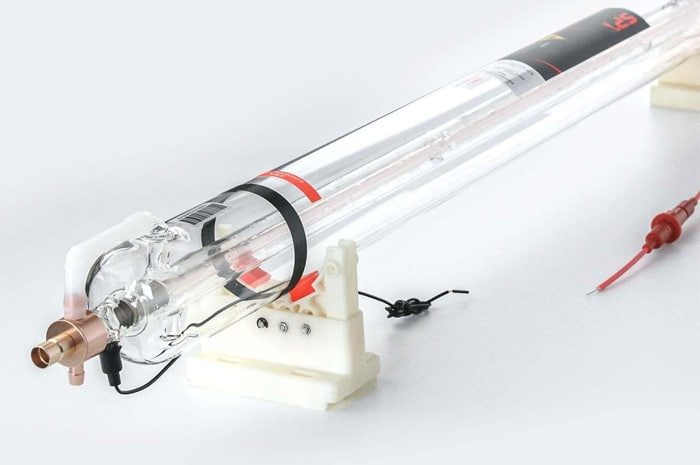
High Power CO2 Laser Tube
The machine is equipped with a powerful CO2 laser tube, which can provide precise and efficient cutting and engraving performance on various materials, including acrylic, wood, leather, fabric, glass, and so on. A high-powered laser tube ensures clean, precise cuts and smooth edges, while also enabling detailed engraving, making it suitable for intricate designs and industrial applications.
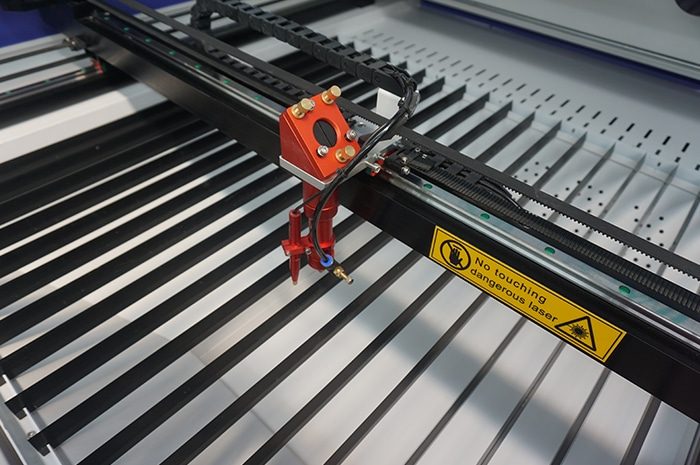
Advanced Motion System
The machine is equipped with an advanced motion system to ensure smooth and accurate movement of the laser head during cutting and engraving. This precise motion control enables clean, sharp cuts while also enabling detailed and intricate engraving on a variety of materials.
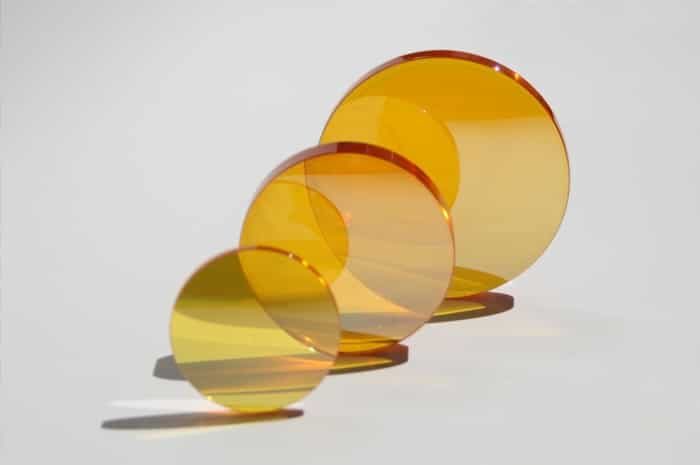
High-Quality Optics
The machine is equipped with high-quality optics capable of producing a narrower, more stable laser beam, ensuring precise cutting paths and cleaner edges even on complex designs and delicate materials. In addition, high-quality optics help reduce beam divergence and losses, thereby improving energy efficiency.
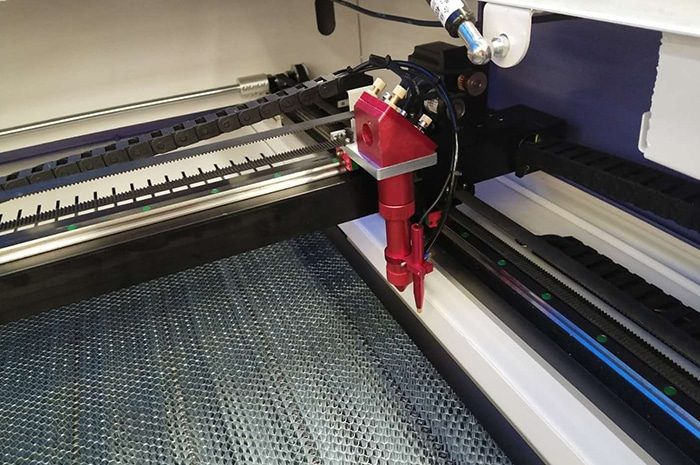
High-Precision CO2 Laser Head
The high-precision CO2 laser head is selected, and it has a red dot positioning function to ensure that the laser beam is precisely aligned with the focusing optics and the nozzle. An accurate laser beam contributes to consistent and uniform cutting results. Additionally, the CO2 laser head is equipped with height control, which ensures consistent focus and compensates for any variations in material thickness or uneven surfaces.
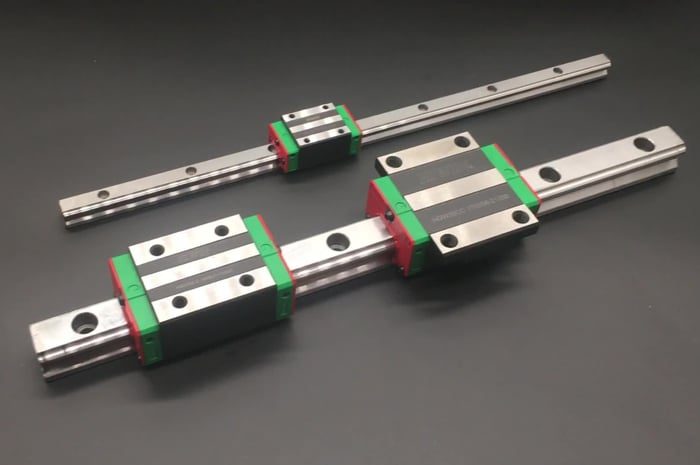
High-Precision HIWIN Rail
The machine is equipped with a Taiwan HIWIN guide rail with excellent precision. HIWIN is manufactured to tight tolerances, ensuring smooth and stable linear motion. This level of precision contributes to accurate and consistent laser cutting, especially when working with intricate designs and fine details. In addition, HIWIN rails are designed to minimize friction, resulting in smooth and quiet movement.
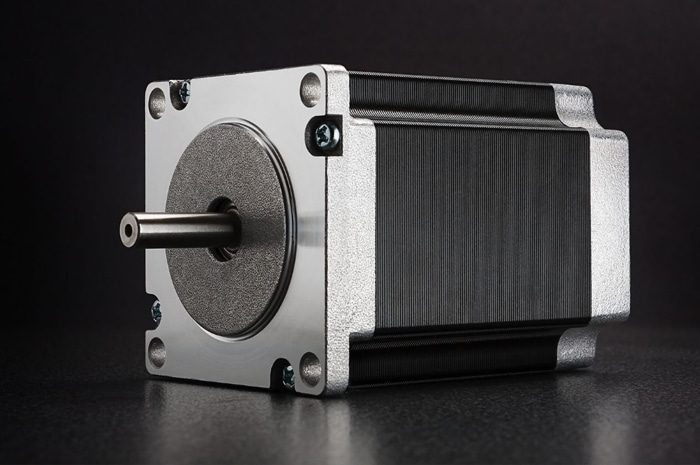
Reliable Stepper Motor
The machine adopts a stepper motor with strong power and reliable performance to ensure the normal operation of the machine. Not only are stepper motors cost-effective, but they also provide precise control of moving parts, ensuring high-quality laser cutting and stable positioning of optical components for reliable, efficient operation.
Technical Specifications
| Model | AKJ-6040 | AKJ-6090 | AKJ-1390 | AKJ-1610 | AKJ-1810 | AKJ-1325 | AKJ-1530 |
|---|---|---|---|---|---|---|---|
| Working Area | 600*400mm | 600*900mm | 1300*900mm | 1600*1000mm | 1800*1000mm | 1300*2500mm | 1500*3000mm |
| Laser Medium | Fiber laser | ||||||
| Laser Power | 80-300W | ||||||
| Power Supply | 220V/50HZ, 110V/60HZ | ||||||
| Cutting Speed | 0-20000 mm/min | ||||||
| Engraving Speed | 0 - 40000mm/min | ||||||
| Min Line Width | ≤0.15mm | ||||||
| Position Accuracy | 0.01mm | ||||||
| Repetition Accuracy | 0.02mm | ||||||
| Cooling System | Water-cooling | ||||||
Laser Welding Capacity
| Laser Power | Cutting Speed | 3mm | 5mm | 8mm | 10mm | 15mm | 20mm |
|---|---|---|---|---|---|---|---|
| 25W | Max Cutting Speed | 5mm/s | 3mm/s | 1.5mm/s | 1mm/s | 0.5mm/s | 0.3mm/s |
| Optimal Cutting Speed | 2mm/s | 1.5mm/s | 0.8mm/s | 0.5mm/s | 0.3mm/s | 0.2mm/s | |
| 40W | Max Cutting Speed | 8mm/s | 5mm/s | 2.5mm/s | 2mm/s | 1mm/s | 0.6mm/s |
| Optimal Cutting Speed | 4mm/s | 2.5mm/s | 1.5mm/s | 1mm/s | 0.6mm/s | 0.4mm/s | |
| 60W | Max Cutting Speed | 12mm/s | 8mm/s | 4mm/s | 3mm/s | 1.5mm/s | 0.8mm/s |
| Optimal Cutting Speed | 6mm/s | 4mm/s | 2mm/s | 1.5mm/s | 0.8mm/s | 0.5mm/s | |
| 80W | Max Cutting Speed | 15mm/s | 10mm/s | 5mm/s | 4mm/s | 2mm/s | 1mm/s |
| Optimal Cutting Speed | 7.5mm/s | 5mm/s | 2.5mm/s | 2mm/s | 1mm/s | 0.6mm/s | |
| 100W | Max Cutting Speed | 18mm/s | 12mm/s | 6mm/s | 4.5mm/s | 2.5mm/s | 1.2mm/s |
| Optimal Cutting Speed | 9mm/s | 6mm/s | 3mm/s | 2.5mm/s | 1.2mm/s | 0.8mm/s | |
| 130W | Max Cutting Speed | 23mm/s | 15mm/s | 7.5mm/s | 5.5mm/s | 3mm/s | 1.5mm/s |
| Optimal Cutting Speed | 11.5mm/s | 7.5mm/s | 3.5mm/s | 2.8mm/s | 1.5mm/s | 1mm/s | |
| 150W | Max Cutting Speed | 25mm/s | 17mm/s | 8.5mm/s | 6.5mm/s | 3.5mm/s | 1.8mm/s |
| Optimal Cutting Speed | 12.5mm/s | 8.5mm/s | 4mm/s | 3mm/s | 1.8mm/s | 1.2mm/s | |
| 180W | Max Cutting Speed | 30mm/s | 20mm/s | 10mm/s | 7.5mm/s | 4mm/s | 2mm/s |
| Optimal Cutting Speed | 15mm/s | 10mm/s | 5mm/s | 3.8mm/s | 2mm/s | 1.2mm/s | |
| 200W | Max Cutting Speed | 33mm/s | 22mm/s | 11mm/s | 8mm/s | 4.5mm/s | 2.2mm/s |
| Optimal Cutting Speed | 16.5mm/s | 11mm/s | 5.5mm/s | 4mm/s | 2.2mm/s | 1.5mm/s |
Comparison of Different Cutting Methods
| Cutting Process | Laser Cutting | Die Cutting | CNC Routing | Ultrasonic Cutting |
|---|---|---|---|---|
| Principle | Laser energy melts/vaporizes material along the cutting path | Pressed die cuts through material using force | Cutting tool follows programmed path | High-frequency vibrations cut through material |
| Precision | High precision | High precision | High precision | High precision |
| Edge Quality | Clean and smooth edges | Clean edges | Clean edges | Clean edges |
| Heat Affected Zone | Minimal heat affected zone | Negligible heat generation | Some heat generation | Minimal heat generation |
| Material Compatibility | Suitable for a wide range of materials, including polycarbonate | Typically used for softer materials, including polycarbonate | Suitable for a wide range of materials, including polycarbonate | Suitable for softer materials, including polycarbonate |
| Versatility | Suitable for intricate and complex designs | Limited to simpler shapes and sizes | Versatile for various shapes and sizes | Versatile for intricate designs |
| Throughput | Medium to high, depending on laser power and material thickness | High for mass production | Medium to high, depending on setup and material thickness | Medium to high |
| Setup Time | Setup involves focusing laser and adjusting parameters | Setup involves creating a die and positioning material | Setup involves programming tool paths and securing material | Setup involves adjusting equipment parameters |
| Material Emissions | Generates fumes and potentially harmful emissions | Generates dust and debris emissions | Generates dust and debris emissions | No dust or debris generated no emissions |
| Automation | Can be fully automated | Can be automated for repetitive cuts | Can be automated for repetitive cuts | Can be automated for repetitive cuts |
| Flexibility | Suitable for various thicknesses and materials | Limited to specific die shapes and sizes | Suitable for various thicknesses and materials | Limited to specific thicknesses and materials |
Product Features
- The machine uses a high-quality CO2 laser generator with the proper power output to cut polycarbonate with clean edges and minimal heat generation.
- With high precision and accuracy, the machine can make intricate and detailed cuts in polycarbonate sheets.
- The machine features a user-friendly software interface for designing and controlling the cutting process and offers compatibility with various design file formats.
- Machines are designed to work with a variety of materials including polycarbonate, acrylic, wood, textiles, and more.
- An automatic focus adjustment system ensures that the laser is optimally focused for a specific material thickness, reducing setup time and improving cut quality.
- The machine allows adjustment of laser power and cutting speed, allowing you to control the cutting process to achieve desired results for different materials and thicknesses.
- The machine includes a material database that provides pre-configured settings for a variety of materials, simplifying the setup process and optimizing cutting parameters and results.
- Proper cooling mechanisms manage the heat generated during cutting and prevent material from melting or warping.
- An efficient exhaust and filtration system removes fumes and debris from the cutting process, ensuring a safe working environment.
- Machines have safety features such as interlocks, enclosures, and safety sensors to prevent operator exposure to laser radiation and ensure safe operation.
- The machine is compatible with CAD/CAM software for designing and generating cutting patterns, enabling seamless integration between design and production processes.
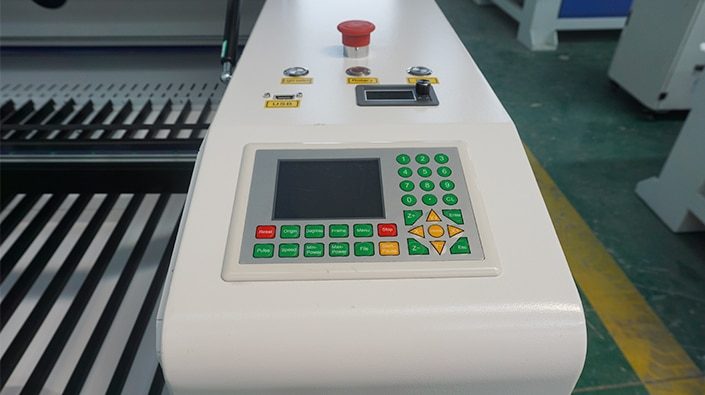
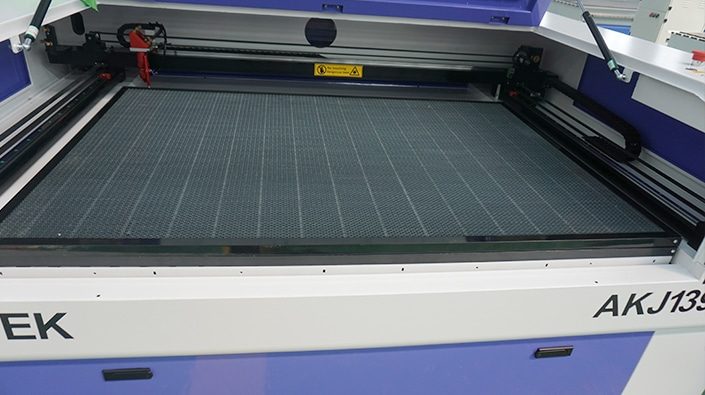
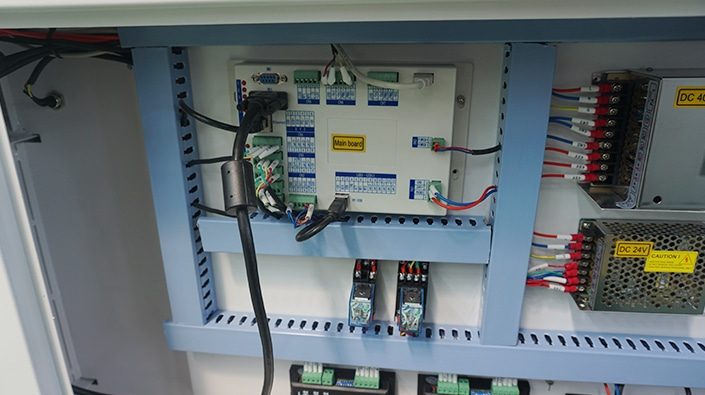
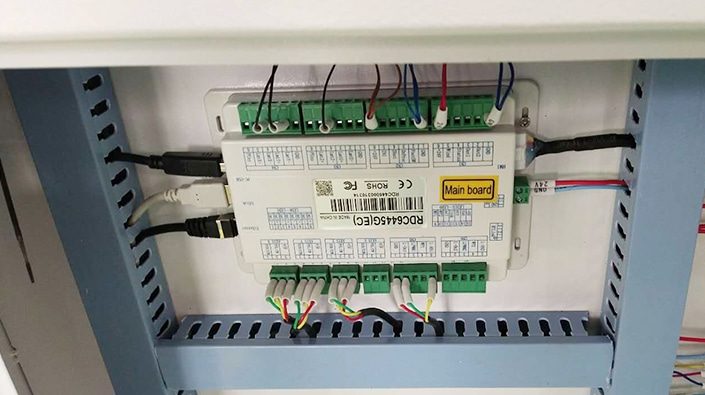
Product Application
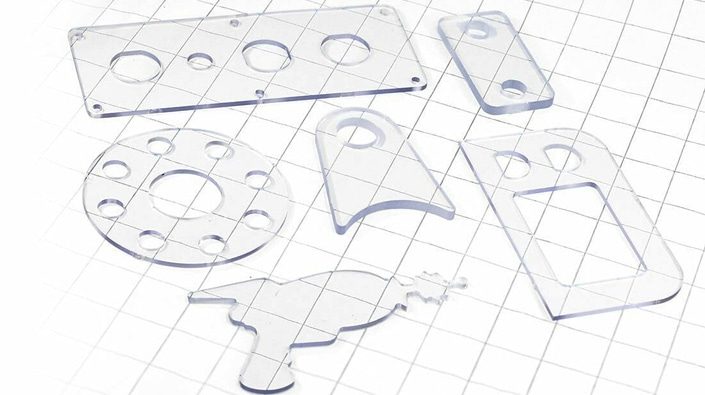
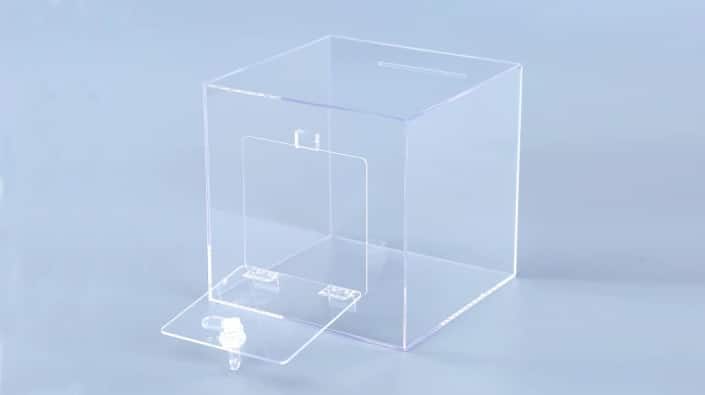
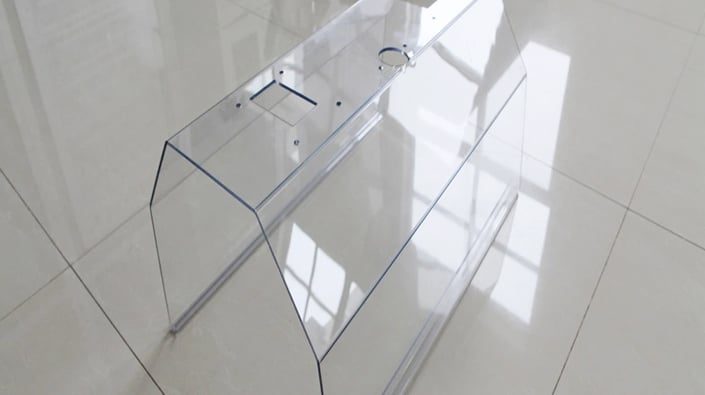
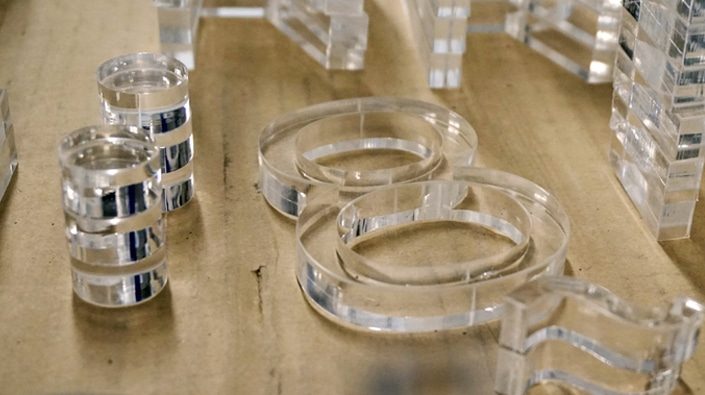
Equipment Selection
High Configuration CO2 Laser Cutting Machine
CO2 Laser Cutting Machine With CCD Camera
CO2 Laser Cutting Machine With Electric Lift Table
Fully Enclosed CO2 Laser Cutting Machine
Double Head CO2 Laser Cutting Machine
CO2 Laser Cutting Machine With Automatic Feeding Device
Large-Size CO2 Laser Cutting Machine
Double Head Large Size CO2 Laser Cutting Machine
Why Choose AccTek?
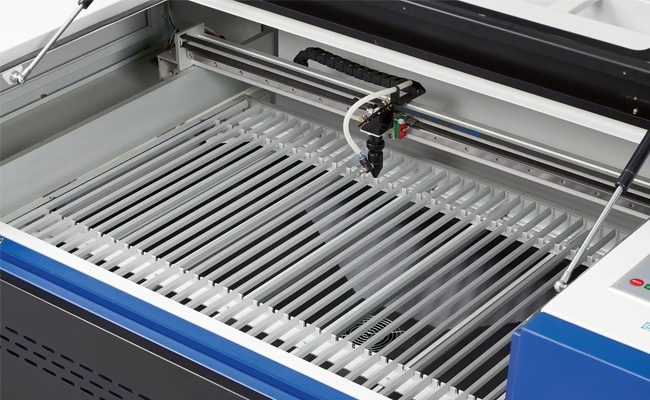
Impeccable Precision
Unrivaled Quality
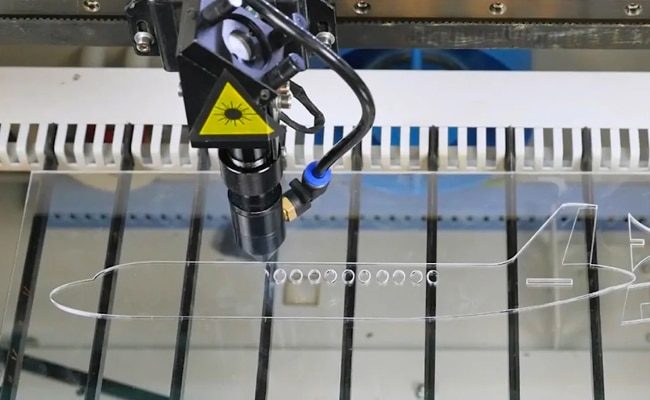
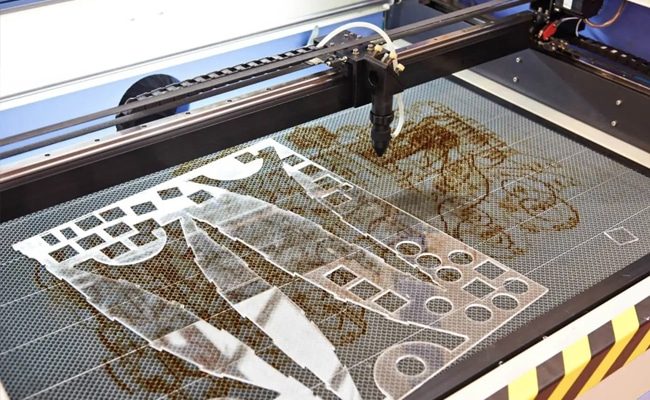
Customized Solutions
Excellent Customer Support
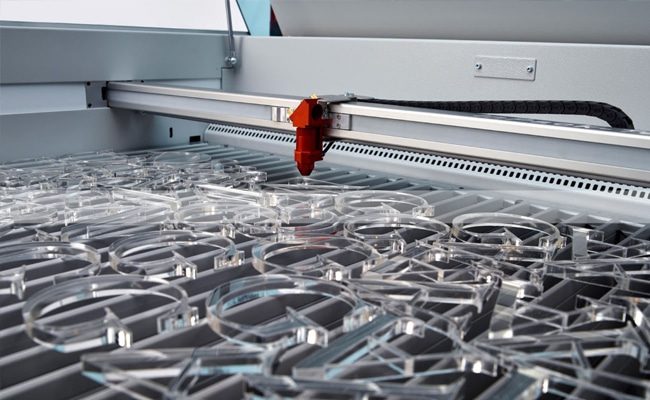
Frequently Asked Questions
- Melting and Vaporization: Polypropylene has a low melting point compared to some other plastics, so it tends to melt and may form melted edges during laser cutting. To avoid this, laser power and speed settings should be adjusted appropriately.
- Heat Sensitivity: While polypropylene is less heat-sensitive than some other plastics, it can still be affected by heat during the laser-cutting process. High laser power or slow cutting speeds can cause localized heat buildup and deformation along the cutting path.
- Smoke Production: Laser cutting polypropylene produces smoke which will vary depending on the specific formulation of the material. Appropriate ventilation and fume extraction systems should be in place to manage fumes and maintain a safe working environment.
- Edge Quality: Laser cutting typically produces clean, smooth edges on polypropylene. However, due to heat, some slight discoloration may occur around the edges. This is usually minimal and can be improved with proper parameter tuning.
- Material Thickness: While polypropylene can be laser cut in a wide range of thicknesses, thicker sheets may require adjustments in laser power, cutting speed, and multiple passes to ensure a complete, clean cut.
- Best Laser Type: CO2 laser generators emit wavelengths that are easily absorbed by organic materials and are often used to cut polypropylene. Other laser types may require different setups and considerations.
- Material Composition: Polypropylene sheets may contain additives, fillers, or coatings that may affect the laser-cutting process. Knowing the composition of the material and how it affects the cut can help improve cut quality.
- Warping: Polypropylene is prone to warping when exposed to heat. While this is usually not a significant issue during laser cutting due to the localized heat of the laser beam, it is still necessary to ensure proper workpiece fixation to prevent any warping during cutting.
- Reflective Coating: Some polypropylene sheets may have a reflective or glossy finish. These surfaces affect how the laser interacts with the material and may require adjustments to the laser’s settings.
- Testing and Optimizing: Optimum results when laser cutting polypropylene requires testing and optimizing laser settings. Different brands and formulations of polypropylene may respond differently to laser cutting, so test cuts will need to be made on scrap.
- Absorption of Laser Energy: Polypropylene is a polymer that is relatively transparent to many common laser wavelengths, making it less suitable for direct laser processing. Laser energy is absorbed by materials, causing them to heat up and possibly melt or evaporate. Because polypropylene does not absorb well at many laser wavelengths, it may not be efficient at converting laser energy into heat, making processing with certain lasers challenging.
- Wavelength Selection: Different types of laser generators operate at different wavelengths, and the absorption of laser energy depends on the compatibility of materials with these wavelengths. CO2 laser generators (10.6 μm wavelength) are commonly used for polymer processing, but polypropylene may not interact strongly with this wavelength.
- Additives: The presence of additives can also affect the laser processing properties of polypropylene. Many commercial polypropylene materials are blended with additives to modify their properties, such as colorants, stabilizers, flame retardants, and impact modifiers. These additives affect how the material interacts with laser energy, which may facilitate or hinder laser processing.
- Melting and Welding: Polypropylene can be melted and welded using laser energy. Laser welding can be achieved by direct welding or transmission welding methods. Direct welding involves melting polymer surfaces together, while transmission welding involves using a transparent material to absorb laser energy and transmit it to the joint between polypropylene parts.
- Surface Finish: Laser processing of polypropylene may result in some surface roughness and microtexture due to the nature of the melting and solidification process. Depending on the application, this may or may not be ideal.
- Thermal Effects: Laser processing generates heat, which affects surrounding materials. Compared with other plastics, polypropylene has a relatively low melting point, so laser processing can cause local melting, thermal deformation, and even vaporization.
- Cutting vs. Engraving: Polypropylene laser cutting is more challenging than engraving or marking due to the need to efficiently manage heat and material removal. Parameters such as laser power, speed, and focus need to be optimized to obtain the desired results.
- Air Absorption: Polypropylene can interact with atmospheric oxygen during laser processing, which can lead to oxidation, discoloration, and changes in material properties. Processing under a controlled environment or an inert atmosphere can help alleviate this problem.
- Hazardous Fume Emissions: When laser cutting polyethylene, the process can generate potentially harmful gases and fumes, including volatile organic compounds (VOCs) and particulate matter. The extent of emissions depends on factors such as laser power, polyethylene type, and cutting speed. Proper ventilation and exhaust systems should be provided to ensure that fumes are effectively removed from the work area, which helps prevent the operator from inhaling dangerous fumes.
- The Material Catches Fire: Polyethylene has relatively low heat resistance, and excessive laser power or prolonged exposure can cause the material to catch fire. This could cause localized burning or melting of the material and could pose a fire hazard. Proper control of laser parameters such as power and speed can help avoid excessive heat buildup and minimize the risk of fire.
- Personal Protective Equipment (PPE): Operators and personnel using laser cutting equipment should wear appropriate personal protective equipment (PPE), such as safety glasses specifically designed to block the wavelength of the laser being used. PPE should be selected according to the specific laser setup and wavelength.
- Laser System Expertise: Proper training and expertise in operating a laser cutting system can help ensure the safe and efficient processing of polyethylene. Knowing the specific properties of materials and the capabilities and limitations of laser systems can help prevent accidents and achieve desired results.
- Waste Disposal: Waste from laser cutting polyethylene such as offcuts, chips, and residue. Handling and disposal should be in accordance with local regulations and best practices.
- Material Integrity: Laser cutting can locally heat, melt, and vaporize polyethylene materials. If not properly controlled, undesirable results such as scorched, melted, or deformed cutting edges may result. Proper selection of laser parameters can help achieve clean, accurate cuts without compromising material integrity.
- Extraction and Ventilation: Adequate exhaust systems and local exhaust ventilation should be provided to remove fumes and gases generated during laser cutting, which will help maintain a safe and clean working environment.
- Regular Maintenance: Laser cutting machines should be maintained and inspected regularly to ensure their correct and safe operation. This includes checking for any wear, verifying the calibration of safety features, and addressing any issues promptly.
- Material Absorption: Polypropylene has relatively low absorption of laser energy, especially when using a CO2 laser generator operating at a wavelength of 10.6 microns. This can present challenges in achieving efficient cutting compared to materials that readily absorb laser energy.
- Heat Sensitivity: Polypropylene is heat sensitive and excessive heat generated during laser cutting can cause the material to melt, char, or deform, especially when high laser power is used. Laser parameters must be carefully controlled to prevent unwanted changes in material properties.
- Fume Emissions: Laser-cutting polypropylene emits hazardous fumes and particles, including volatile organic compounds (VOCs) and particulates. Proper ventilation and fume extraction systems help ensure operator safety and prevent air quality problems.
- Fire Hazard: Polypropylene is a thermoplastic material that will melt or catch fire when exposed to high temperatures. Laser cutting generates heat, which can cause local melting or ignition of the material if the laser energy is too concentrated or the cutting parameters are set incorrectly.
- Limited Thickness: Laser cutting may be less effective with very thick polypropylene materials. As the thickness of the material increases, so does the energy required to cut, which can result in incomplete cuts or excessive heat affecting surrounding areas.
- Cost: Purchasing and maintaining a laser cutter can be costly. The initial investment in a laser cutting machine, ongoing maintenance, energy consumption, and potential replacement of laser components all contribute to the total cost.
- Surface Quality: While laser cutting generally produces clean edges, certain polypropylene formulations or laser settings may cause some burnt or discolored cut edges. This may require additional finishing steps to achieve the desired surface quality.
- Initial Setup and Optimization: Achieving the best cutting results in polypropylene may require extensive experimentation and optimization of laser parameters. This can lead to longer setup times and potential material waste during adjustments, especially when using new materials or designs.
- Safety Considerations: Laser cutting polypropylene involves safety risks, so strict safety protocols need to be implemented to protect operators from harmful fumes, laser radiation, and potential fire hazards. Proper training and personal protective equipment can help minimize risks to operators.
- Material Differences: Due to variations in composition and additives, different types and grades of polypropylene respond differently to laser cutting. It is therefore necessary to know the specific properties of the polypropylene being used and to test to ensure the desired results are obtained.
- Reflective Surface: If polypropylene contains certain additives or has a reflective surface, it may not absorb laser energy effectively, resulting in poor cutting results.
- Complex Geometries: While laser cutting is ideal for complex designs, extremely complex geometries with tight corners or small radii can be challenging due to the nature of laser beam focusing and cutting path requirements.
- Ventilation and Scheduling: Make sure your laser cutting machine’s exhaust ventilation system is set up correctly and is operating efficiently. The ventilation system should be able to effectively remove fumes and airborne particles from the cutting area. Make sure the exhaust fan is the right size for the laser cutter and there are no obstructions inside the duct.
- Air Assist: Take advantage of the air assist feature on your laser cutter. The air assist guides the airflow around the laser beam, helping to blow away debris and fumes from the cutting process. Not only does this improve cut quality, but it also helps reduce the amount of smoke produced.
- Smoke Exhaust System: In addition to the exhaust system of the laser cutting machine, you can also consider using a separate smoke exhaust system or air purifier. These devices can help trap and filter any residual fumes that may escape from the exhaust.
- Material Masking: Applying masking tape to polypropylene surfaces before cutting helps reduce burn marks and smoke. The tape can act as a barrier between the laser and the material, minimizing direct exposure to the heat of the laser.
- Cutting Parameters: Cutting parameters are challenged to minimize the extent of burning and melting which can lead to increased smoke production. Finding the right balance between power, speed, and number of passes can help achieve a cleaner cut and reduce smoke output.
- Material Selection: Different types and brands of polypropylene may have different levels of smoke emissions. If possible, choose materials that are designed for laser cutting and have low smoke emissions.
- Operating Procedures: Operators are trained in proper cutting techniques to minimize unnecessary burning or overheating of material, which may result in increased smoke production.
- Regular Maintenance: Keep your laser cutting machine clean and well-maintained. Clean the cutting table and ventilation system regularly to ensure optimum performance and to prevent the buildup of debris that can cause fume emissions.

